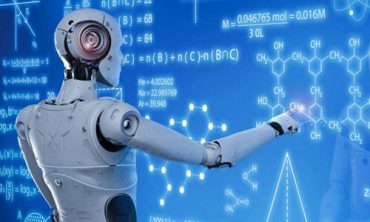
With AutoAI, businesses can build and deploy a machine learning model with sophisticated training features and no coding.
Speed to market is critical for businesses to be successful. The growing importance of artificial intelligence (AI) as a factor in decision making means the faster a business can deploy AI for a specific task, the faster it can reap the benefits. Therein lies the challenge. In most businesses, data scientists must do all the heavy lifting. They must ensure the right data is selected and in the proper format to train models. They must pick which models and algorithms to use. And then they must fine-tune those efforts to ensure the model delivers the most accurate predictions.
Trout out the adage necessity is the mother of invention. Help, in the form of AutoAI from IBM, is now available that allows non-data scientists to do some or all this work on their own, as well as collaboratively work with the data scientists in developing optimal models for the business.
See also: Businesses Still Struggling With AI Deployment
With AutoAI, businesses can build and deploy a machine learning model with sophisticated training features and no coding. The tool does most of the work for you. The AutoAI graphical tool in Watson Studio automatically analyzes a company’s data and generates candidate model pipelines customized for the company’s predictive modeling problem. AutoAI automates:
- Data preparation
- Model development
- Feature engineering
- Hyper-parameter optimization

Let’s explore these areas in greater detail.
Data pre-processing: Most data sets contain different data formats and missing values, but standard machine learning algorithms work with numbers and no missing values. AutoAI applies various algorithms, or estimators, to analyze, clean, and prepare your raw data for machine learning. It automatically detects and categorizes features based on data type, such as categorical or numerical. Depending on the categorization, it uses hyper-parameter optimization to determine the best combination of strategies for missing value imputation, feature encoding, and feature scaling for your data.
Automated model selection: The next step is automated model selection that matches your data. AutoAI uses a novel approach that enables testing and ranking candidate algorithms against small subsets of the data, gradually increasing the size of the subset for the most promising algorithms to arrive at the best match. This approach saves time without sacrificing performance. It enables the ranking of many candidate algorithms and selecting the best match for the data.
Automated feature engineering: Feature engineering attempts to transform the raw data into the combination of features that best represents the problem to achieve the most accurate prediction. AutoAI uses a novel approach that explores various feature construction choices in a structured, non-exhaustive manner while progressively maximizing model accuracy using reinforcement learning. This results in an optimized sequence of transformations for the data that best match the algorithms of the model selection step.
Hyperparameter optimization: Finally, a hyper-parameter optimization step refines the best performing model pipelines. AutoAI uses a novel hyper-parameter optimization algorithm optimized for costly function evaluations such as model training and scoring that are typical in machine learning. This approach enables fast convergence to a good solution despite long evaluation times of each iteration.
Summary
An article by Jacques Roy, worldwide Digital Technical Engagement lead on Watson Studio and Watson Machine Learning, at IBM, put the benefits of AutoAI into perspective. In that article, he noted:
“Overall, AutoAI democratizes data science and AI — data preparation, model development and selection, execution, and deployment. This addresses the shortage of data scientists and gets to a solution faster. By accelerating the data science lifecycle with AutoAI, businesses can focus more on high value-added work and innovative solutions.”
The bottom line is that AutoAI offers:
- Faster model selection: Users select top-performing models in only minutes.
- Faster starts: Users can quickly get started with experimentation, evaluation, and deployment.
- AI lifecycle management: AutoAI enforces consistency and repeatability of end-to-end ML and AI development.






























